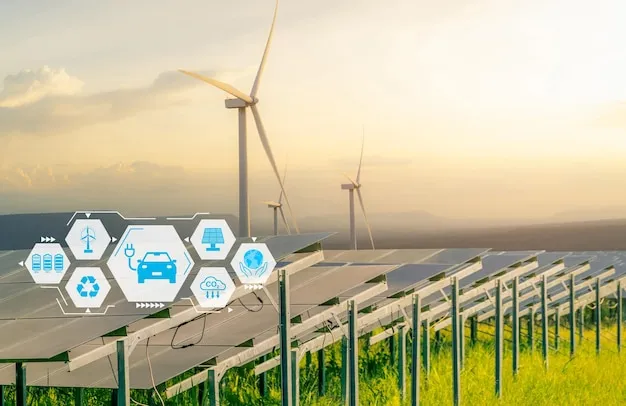China’s Green AI: Leveraging Machine Learning for Renewable Energy Optimization

China is increasingly integrating artificial intelligence into its renewable energy sector, creating a new paradigm for sustainable development. By leveraging machine learning algorithms, energy providers can optimize grid operations, improve renewable energy forecasting, and enhance overall efficiency. These AI-driven solutions help reduce operational costs, stabilize energy supply, and accelerate the transition toward a low-carbon economy. With China aiming to reach carbon neutrality by 2060, innovations in Green AI are becoming central to national energy strategies.
AI-Driven Optimization in Renewable Energy
Renewable energy sources such as solar, wind, and hydropower are inherently variable, making grid management complex. AI tools are now being used to forecast energy production, balance supply and demand, and dynamically adjust distribution strategies. Machine learning models analyze historical weather patterns, energy consumption trends, and grid performance metrics to predict output from renewable sources with higher accuracy.
This predictive capability allows energy operators to reduce reliance on fossil fuel backup plants, minimize energy wastage, and maintain grid stability even during periods of high demand. By integrating AI into grid management systems, China is improving energy efficiency while reducing greenhouse gas emissions.
Emerging Technologies and Startups
Several startups and technology companies in China are at the forefront of Green AI development. For example:
- Envision Energy AI Labs: Specializes in AI-powered wind turbine optimization and predictive maintenance systems.
- Sungrow AI Analytics: Uses machine learning to optimize solar panel performance and energy storage efficiency.
- GridMind Technologies: Implements AI algorithms for real-time load balancing, smart grid management, and automated energy dispatch.
These companies collaborate closely with universities, research institutes, and local government initiatives to integrate AI solutions into renewable energy infrastructure at scale.

Economic and Environmental Implications
The deployment of AI in renewable energy has significant economic benefits. By improving efficiency and reducing energy loss, providers can lower operational costs and increase the return on investment in renewable infrastructure. Predictive maintenance powered by AI reduces downtime and extends the lifespan of energy assets, further enhancing financial performance.
Environmentally, AI enables better utilization of clean energy resources, reducing reliance on coal and other non-renewable sources. Analysts estimate that AI-driven optimization could improve renewable energy output by 8–12 percent annually, significantly contributing to emission reduction goals and environmental sustainability.
Applications Across the Energy Ecosystem
AI applications are not limited to generation; they extend across the entire energy ecosystem:
- Smart Grids: Machine learning algorithms adjust energy flows in real-time, ensuring efficient distribution across urban and rural areas.
- Energy Storage Management: AI predicts peak demand periods and manages storage units such as batteries, optimizing discharge cycles and energy availability.
- Electric Vehicle Integration: Predictive models coordinate EV charging with grid load, reducing strain on the network and encouraging renewable energy usage.
- Demand-Side Management: AI helps industrial and residential users optimize consumption patterns, reducing peak load and energy costs.
These applications demonstrate how AI is enabling a more intelligent, responsive, and sustainable energy infrastructure.
Policy Support and Government Initiatives
The Chinese government has prioritized AI-driven renewable energy solutions through policy incentives, research grants, and infrastructure investments. Programs such as the National Energy Administration’s Green AI Fund provide financial support to startups and technology firms developing AI solutions for energy optimization.
Regulatory frameworks also encourage data sharing, smart grid deployment, and collaboration between private companies and public utilities. By creating a supportive ecosystem for AI integration, the government aims to accelerate adoption and strengthen China’s leadership in sustainable energy technologies.
Challenges and Considerations
Despite progress, implementing AI in renewable energy faces challenges. Accurate forecasting requires high-quality, granular data from multiple sources, and incomplete or inconsistent datasets can limit algorithm performance. Cybersecurity is another concern, as AI-integrated grids could be vulnerable to attacks if proper protections are not in place.
Additionally, energy operators must balance AI-driven automation with human oversight, ensuring that decision-making remains safe and reliable. Training personnel to interpret AI insights and implement corrective actions is essential for sustainable integration.
International Collaboration
China is also engaging in international collaborations to advance Green AI. Partnerships with European, American, and Asian research institutions enable technology transfer, joint experiments, and benchmarking of AI models. These collaborations help standardize AI applications in energy, improve interoperability, and accelerate innovation globally.
Experts note that international knowledge sharing is particularly important for addressing challenges such as grid variability, climate unpredictability, and large-scale deployment of renewable systems.
Future Outlook
Looking ahead, AI is expected to play an even larger role in China’s renewable energy sector. Advancements in quantum computing, edge AI, and IoT integration will allow energy operators to process larger datasets in real time, further improving forecasting and grid efficiency.
By 2030, AI-driven systems could manage most renewable energy operations autonomously, integrating solar, wind, hydro, and storage systems into a unified, intelligent network. The continued growth of startups and technology firms in this space will drive innovation, economic growth, and environmental impact, positioning China as a global leader in sustainable energy solutions.
Conclusion
China’s Green AI initiatives demonstrate the transformative potential of machine learning in optimizing renewable energy systems. By enhancing efficiency, reducing costs, and stabilizing energy supply, AI is enabling a more sustainable energy ecosystem. Collaboration between startups, government agencies, and research institutions ensures rapid technological advancement, while supportive policies facilitate large-scale deployment. As AI-driven energy solutions continue to evolve, China’s renewable energy infrastructure is poised to achieve unprecedented levels of efficiency, reliability, and environmental impact.






